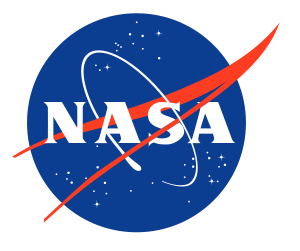
- Image via Wikipedia
The Obama administration unveils its controversial new plan for the future of NASA’s human spaceflight program.
By virtue of the fact that our ancient evolutionary ancestors were graced with five digits on two forelimbs, we humans now have two five-fingered hands, and most of us count in base-10 notation. Consequently, certain temporal milestones are more appealing than others. For instance, media stories this week commemorated the 40th anniversary of Apollo 13, the legendary lunar mission where three astronauts trapped in a malfunctioning spacecraft were saved through an inspiring combination of luck, ingenuity, and teamwork.
This week also saw the 29th anniversary of the first space shuttle launch, as well as the 49th anniversary of Vostok 1, the flight that took the first human into outer space. But, thanks to our ten-fingered ways we’ll all wait until next year to celebrate. So it goes in any product of biological evolution—seemingly insignificant initial events cast shadows measured in eons. This holds true for technological progress, too: Early decisions in development or deployment become locked in, constraining later features and capabilities. Consider NASA: Today’s extremely expensive and somewhat unsatisfying staples of US human spaceflight, the space shuttle and a space station, can be traced back forty years or so to the aftermath of the Apollo program, when President Nixon chose them as its replacements. The legacy of these choices is that no one has ventured beyond low-Earth orbit ever since.
This has far graver implications than failing to fulfill a generation’s dreams of Pan-Am moon flights and Lunar Hiltons. In the fullness of time, lack of progress in expanding humanity’s sustainable presence off-planet represents an existential threat to our species. Even staunch critics of human spaceflight must acknowledge this. It doesn’t take a rocket scientist to realize that keeping all one’s eggs in a single, vulnerable planet-sized basket is an unsound long-term investment strategy. To do so is to court extinction.
NASA administrator Charles Bolden may have had such thoughts in mind on Tuesday when he addressed the audience at the National Space Symposium. “This is a big week for the entire nation,” Bolden said, “and it’s a week where probably more people than ever before will be thinking about space. It’s an important week for all of us in the space industry and it’s a particularly important week for NASA.”
Bolden was referring to the Obama administration’s new plans for America’s space agency, which the president himself presented and defended yesterday in a speech at Kennedy Space Center in Cape Canaveral, Florida. President Obama’s 2011 budget request eliminated funding for the earlier Bush administration’s Constellation program, which aimed to build a fleet of government-run rockets for returning astronauts to the Moon in the 2020s to build a lunar base. Instead, Obama’s plan deemphasizes the Moon and pumps more money into the commercial space sector for creating rockets to replace the aging space shuttle fleet. It also seeks to spark innovation, boosting NASA funds for development of breakthrough technologies in space-based propulsion, life-support, and power generation.
The strategy, it is hoped, will lead to more affordable and sustainable space access, and a wider variety of near-future interplanetary missions for astronauts: not only to the Moon, but also to distant space telescopes and asteroids. Like Bush’s earlier plan, Obama’s cites Mars as the long-term goal. But unlike Constellation, the new approach prizes a flexible and robust spacefaring capability more so than any particular destination.
Related articles by Zemanta
- NASA Chief: Change is Vital for Space Agency’s Future (space.com)
- NASA unveils sweeping new programs (cnn.com)
- Obama Aims to Send Astronauts to an Asteroid, Then to Mars (space.com)
- First moonwalker blasts Obama’s space plan (msnbc.msn.com)
- THE FACT SHEET: Obama’s Space Plan Revealed (space.com)







![Reblog this post [with Zemanta]](http://img.zemanta.com/reblog_b.png?x-id=aa3aae27-1854-4fff-9ef4-ca03fb68933b)
